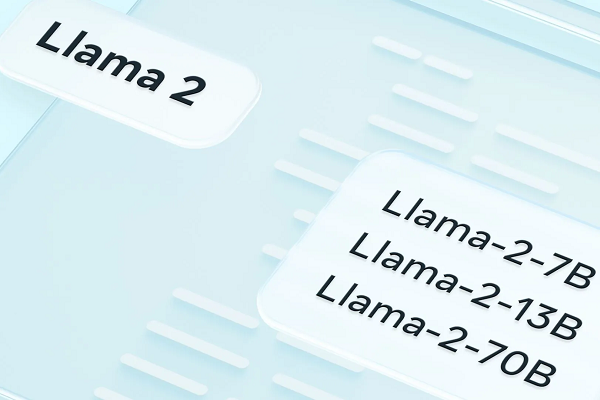Meta Releases Llama 2 Generative AI Model, Challenging OpenAI and Google With Free Commercial Licensing
 Meta has introduced the Llama 2 generative AI model and is distributing a license fee-free version to businesses in a direct if unstated, challenge against OpenAI and Google. Microsoft is Meta’s “preferred partner” for distributing Llama 2, but the open-source large language model is accessible from AWS, Hugging Face, and other sources.
Meta has introduced the Llama 2 generative AI model and is distributing a license fee-free version to businesses in a direct if unstated, challenge against OpenAI and Google. Microsoft is Meta’s “preferred partner” for distributing Llama 2, but the open-source large language model is accessible from AWS, Hugging Face, and other sources.
Llama 2 Free
Llama 2 upgrades the power (and capitalization choices) of the earlier iteration released in February. The first Llama model was 65 billion parameters, while Llama 2 comes in seven, 13, and 70-billion parameter options and is trained on a database that Meta claims is 40% larger. The context window, how much the AI remembers within a single conversation, has doubled to two trillion tokens. As a result, Meta boasted that Llama 2 outperforms Llama 1 and many other open-source LLMs significantly.
The original Llama was supposed to be restricted to research and academic projects, but the model was leaked within a few days, causing technical and regulatory headaches aplenty for Meta. Llama 2 skips that issue by going open-source. The deal with Microsoft will bring Llama 2 to the Azure model library and allow developers to build applications with it without paying a licensing fee, though they will have to agree to Meta’s terms and conditions. The open-source design is part of Meta’s larger philosophy and, presumably, business strategy with regard to generative AI models. For comparison, OpenAI, Google, and most other LLM developers are charging enterprises that wish to custom-build services around their models.
“We’re partnering with Microsoft to introduce Llama 2, the next generation of our open source language model. Llama 2 will be available for free for research and commercial use,” Meta CEO Mark Zuckerberg said. “Open source drives innovation because it enables many more developers to build with new technology. It also improves safety and security because when software is open, more people can scrutinize it to identify and fix potential issues. I believe it would unlock more progress if the ecosystem were more open, which is why we’re open sourcing Llama 2.”
Meta anticipated concerns about what that might mean for people trusting Llama 2 and made a big deal about emphasizing the safety and privacy policies behind the development. For instance, Llama 2 comes pre-trained solely on public data before multiple fine-tuning stages and human feedback rounds. The company has also released a responsible use guide to outline best practices and an acceptable use policy to warn them about lines they shouldn’t cross with the technology.
“Our open source approach promotes transparency and access. We know that while AI has brought huge advances to society, it also comes with risk,” Meta wrote in its introduction to Llama 2. “We are committed to building responsibly and are providing a number of resources to help those who use Llama 2 do so too.”
Follow @voicebotaiFollow @erichschwartz
Meta Introduces Large Language Model LLaMA as a Competitor for OpenAI
Stanford Closes Meta LLaMA-Based Alpaca Generative AI Demo Over Safety and Cost Problems








